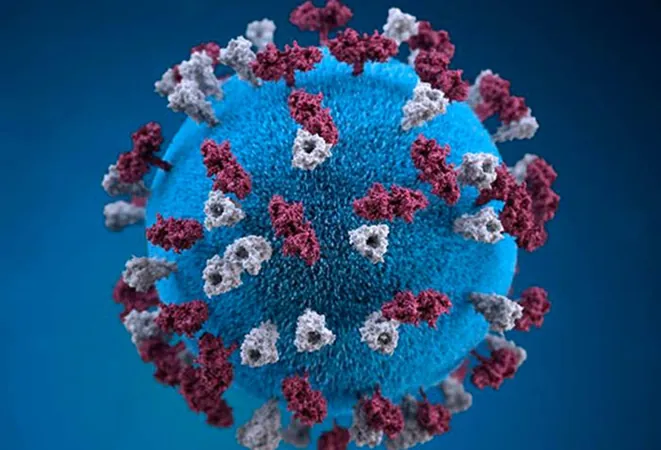
The Indian Pot Belly: From Luxury to Lifethreatening
2025-04-13
Author: Emily
Once a Symbol of Prosperity, Now a Growing Concern
Once celebrated as a sign of wealth and comfort, the Indian pot belly—a soft belly bulge—has transitioned from a cultural icon to a serious health hazard. In literature, it symbolized a life of ease; in films, it became synonymous with lazy officials and corrupt figures. However, this so-called ‘status symbol’ is now drawing serious attention due to its alarming connection to health issues.
The Alarming Rise of Obesity in India
India is facing a staggering obesity crisis. According to recent statistics, 180 million adults were classified as overweight or obese in 2021, positioning India second only to China in global obesity rates. A 2021 Lancet study projects that by 2050, this number could skyrocket to 450 million, affecting nearly a third of the country's future population.
The Hidden Danger of Abdominal Obesity
At the core of this crisis is abdominal obesity, which doctors warn is far more dangerous than mere appearance. Research dating back to the 1990s has linked belly fat to severe health conditions such as Type 2 diabetes and heart disease. Unfortunately, abdominal obesity is rampant: approximately 40% of women and 12% of men in India fit this description, with waist measurements exceeding recommended thresholds.
Why is Belly Fat Such a Concern?
Belly fat is linked to insulin resistance, a condition hindering the body’s ability to manage blood sugar. South Asians, including Indians, are particularly susceptible—often carrying more fat than white Caucasians at the same Body Mass Index (BMI). This fat tends to accumulate around the trunk rather than deep within the abdomen, posing unique metabolic risks.
The Evolutionary Mystery Behind Fat Distribution
While genetic factors are still being researched to understand why South Asians exhibit these fat distribution patterns, one theory relates to historical famines. Our ancestors adapted to store energy in the abdomen due to periods of scarcity, a trait that has persisted even as food became more available. This evolutionary backdrop could explain the modern health crisis.
Revisiting Obesity Guidelines for Indians
Last year, the Indian Obesity Commission updated the country's obesity guidelines, shifting focus from just BMI to encompass fat distribution and its health implications. The new two-stage system distinguishes between those with high BMI but without abdominal fat issues and those with dangerous visceral fat requiring more intervention.
A Necessary Shift in Lifestyle
Indian experts agree that lifestyle changes are crucial in combating this growing epidemic. They advocate for increased physical activity—around 250 to 300 minutes of exercise each week—especially for South Asians. This is more than the standard recommendations for Western populations, reflecting the unique metabolic challenges faced by Indians.
A Call to Action for Health Awareness
The pot belly should no longer be seen as a humorous quirk but as a serious medical warning. With rising rates of abdominal obesity, India is sitting on a ticking health time bomb, urging immediate lifestyle changes and increased awareness to avert a potential crisis.









 Brasil (PT)
Brasil (PT)
 Canada (EN)
Canada (EN)
 Chile (ES)
Chile (ES)
 Česko (CS)
Česko (CS)
 대한민국 (KO)
대한민국 (KO)
 España (ES)
España (ES)
 France (FR)
France (FR)
 Hong Kong (EN)
Hong Kong (EN)
 Italia (IT)
Italia (IT)
 日本 (JA)
日本 (JA)
 Magyarország (HU)
Magyarország (HU)
 Norge (NO)
Norge (NO)
 Polska (PL)
Polska (PL)
 Schweiz (DE)
Schweiz (DE)
 Singapore (EN)
Singapore (EN)
 Sverige (SV)
Sverige (SV)
 Suomi (FI)
Suomi (FI)
 Türkiye (TR)
Türkiye (TR)
 الإمارات العربية المتحدة (AR)
الإمارات العربية المتحدة (AR)